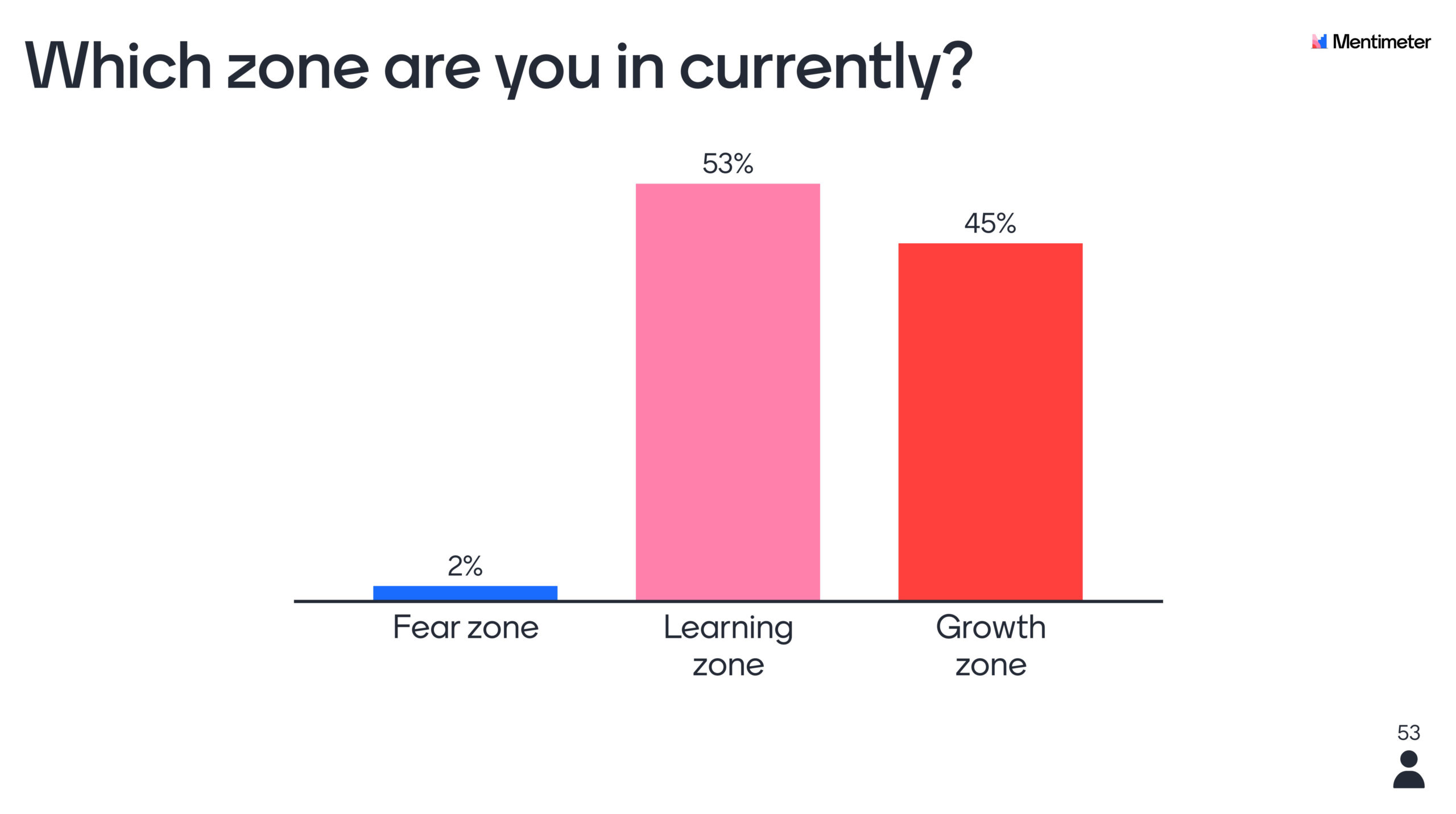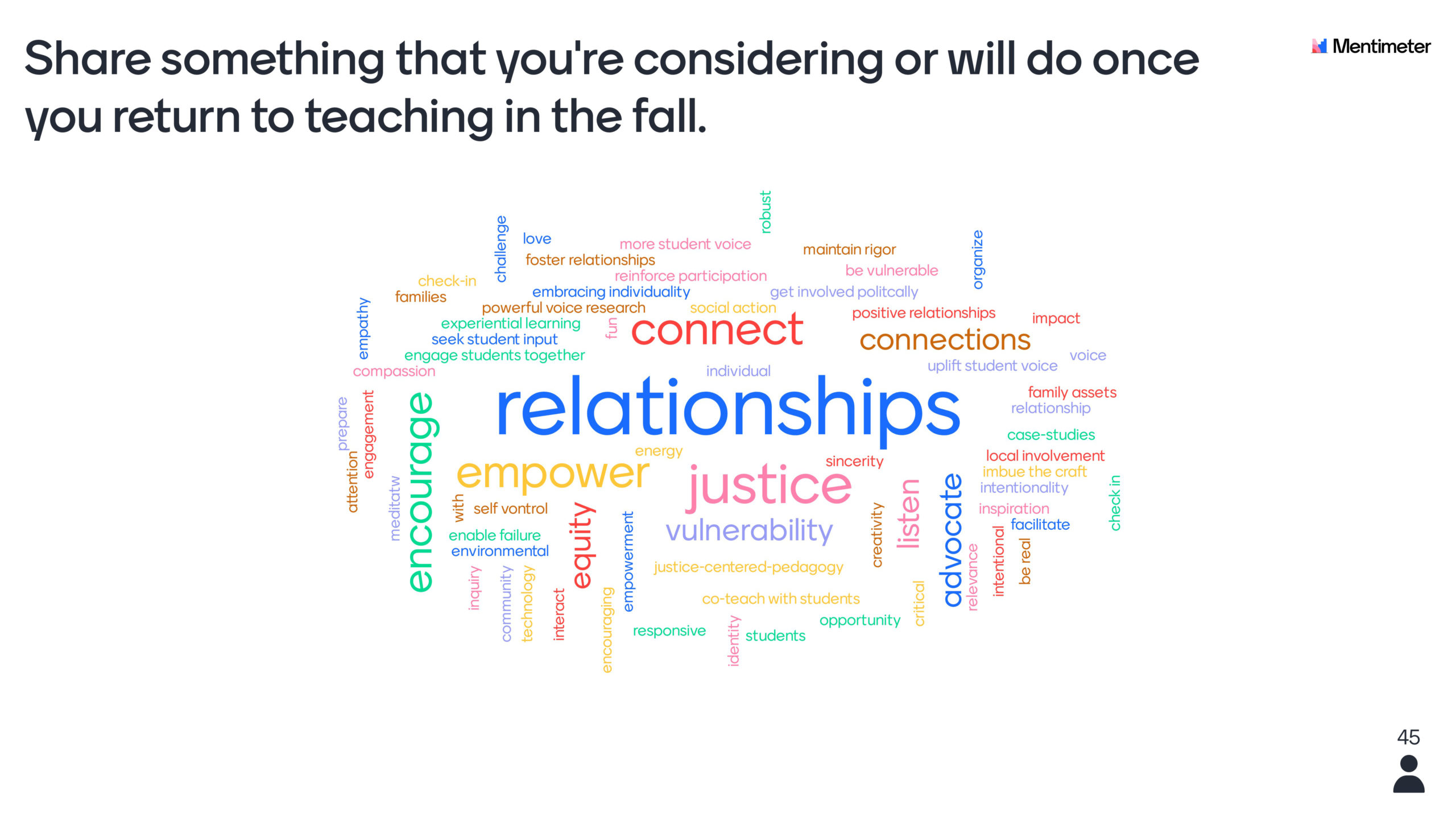Over the course of the symposium, we asked online participants for their opinions on a few questions related to remote learning and their experiences. Here are their thoughts...
Poll #1: How well did your school support you, your students, and/or their families in the move to remote learning?
- Not well at first. Tried to play catch up later on.
- My district was already set up pretty well for online learning at the high school level because we had been using the Canvas LMS for about a year. Students and teachers were already familiar with how to access and submit digital assignments, and we were able to give quizzes and tests on Canvas too. One aspect that could have been improved was that my district waited until Week 6 at home to start offering professional development to teachers on how to use various recording and video software like Screencastify and EdPuzzle. One thing that seems rare about my district is that any form of live instruction was prohibited, so only pre-recorded videos could be used. For families, students already had 1:1 Chromebooks at the middle and high school levels, but the school did distribute Wifi hotspots as families requested them.
- They gave lots of training and guidance! I learned so many new programs!
- The support evolved over the course of the two months, from minimal to moderate.
- The teacher was the last thing considered, if considered at all, in the decisions made about remote learning. The focus was not on learning but the increase in grades to increase school image and please parents.
- Very well.
- I feel they did a great job trying to support us. Sometimes there were things they were unable to help us with. The only thing I wish they could have done is utilized the support staff to make contact with students and families instead of teachers
- My District did a great job of providing resources and training. My school leadership was not as helpful.
- My district did the best they could considering the crisis at hand.
- As best as they could… but at the end of the day I don’t think that remote learning could ever work.
- We tried. We are in a high need area, so both devices and internet access were not givens. We had >50% participate in remote learning.
- Our school did a good job supporting students and families through the move to remote learning. I am excited to see what teachers can do with more time to think and plan strategically.
- They did a great job despite the inequities that we face as a district.
- School did offered some support, such as pairing me with a bilingual clerk to call parents. (There was no PD or support to make lessons more engaging/do-able for students.) However, they demanded more work to be done by a teacher when student did not put any effort on remote learning. The county already had a good LMS, and provided tons of example digital lessons (engaging, not engaging, tech heavy). I saw an average of 30 % assignment completion rate. As remote learning progressed, school provided chromebook to the families who needs a device. However, my students who got the chromebook did not participate on remote learning activity at all. School made me to contact all failing student via calling home several times. If I needed translation service, they paired me with a bilingual clerk. As a subject, chemistry had 70% of students failing before remote learning.
- It well since a majority of my students did not have the necessary technology needed to complete assignments. Also, students were told that everyone passes and unfortunately that is what set the tone for any obligation and commitment to online learning. They stopped coming.
- Staff meetings have been helpful; we use Google Classroom and Google Drive a LOT so staff was familiar with tech.
- They did a great job!
- Pretty well. I would have liked quicker approval of websites/online tools. But they were proactive in getting as many of our students online as possible.
- We had very little forewarning that students would not return and were asked to jump into remote learning without the district having clear plans established. Given the circumstances and uncertainty, I think the school supported as best they could, helping tremendously with phone calls to families where student participation was low and working to ensure that all students had clear access to technology.
- On an individual level, I have been very happy with the administrators I have communicated with regarding their transparency in communication and how they have prioritized needs (for example, working to ensure meal’s are still being provided and working for every student to have access to a computer/internet first and sending the clear message that grades are not the top priority). However, the sudden shift to remote learning revealed the poor preparation for communication with the entire student community and other foundational planning needed for successful remote learning.
Poll #2: What have you missed most about traditional teaching since transitioning to remote learning?
- Interacting with my students and colleagues.
- Seeing my students and continuing to build a relationship with them.
- The in-person interaction, communication, and community of the school environment.
- I missed being able to attend to all of my students at and ensure that they understand what they are learning.
- Feedback in terms of students’ body language during in person classes.
- As an advocate of education reform there are few things I like about "traditional" teaching. I would say I miss the interactions and real-time adjustments that can occur with formative assessment.
- I miss interacting face-to-face with my students, and out classroom discussions. I miss talking to them about non-academic topics as well as their hopes and plans for their future. I miss the hands-on science experiences.
- I miss seeing my students and checking in with them as they walk into my room. This was a tough year and I thought I would enjoy the time away, but reading student replies to check ins wasn’t the same and it made me value the face-to-face contact we have every day.
- I have missed the students the absolute most! I missed seeing and talking with them everyday.
- Seeing and interacting with the students face to face.
- relationships with my students and lab activities
- The daily face-to-face interaction with the students.
- My students, colleagues and a document camera
- Interacting with students and seeing their smiling faces when they understand a concept they have worked hard at.
- Hands-on labs
- What I’ve missed most is physical interaction with students.
- I miss the opportunity say good morning to my students with a high five high, dance, and hug! Miss the connection with the students during turn and talk discussions.
- Face time with my students
- Connecting with my students and being able to give and get feedback.
- The daily, face to face interaction with my students
- The daily face-to-face interactions with the students
- Face to face conversations with students and with colleagues!
Poll #3: What have you learned about your students that you were unaware of previously?
- I was not aware that so many of my seniors have jobs, and during this distance learning time, many of their shifts became day shifts.
- They want and need the face-to-face motivation and interaction to be successful.
- We had 1-1 conversations about the things that really interested them.
- Home situations, physical constraints(for online learning), craving for learning in interactive way, need for understanding individual situations
- Many need to have contact and some even though they do not seem it, really need us as teachers and reach out more regularly than I would expect.
- Several students prefer the online environment for self-paced learning and to avoid bullying.
Poll #4: What top two recommendations would you make for your school and/or district about re-opening schools?
- Use caution and think about all factors including staff.
- Discuss at a school/district level how to institute justice-centered pedagogy in our school based of student-voice 2. Ensure student and teacher voice is heard on re-opening decisions
- smaller class sizes & alternating class days just like in college
- 1- Really push for internet access to be a reality and common utility for EVERYONE. It’s an invaluable tool for learning and job seeking. Be sensible and realistic when planning the reopening- if they think the halls are pristine, and students will follow every single rule that’s passed to keep the students safe, they need to step foot in a school. They desperately need to listen to what our scientist teachers have to say.
- social distancing would imply less students in the building at a time. AM and PM school sessions? Hire more teachers?
- Get a sense of what would make the local community eager to go back to school.
- 1. Assess safety of students, teachers, and staff first. If school cannot provide safe conditions, continue with remote learning. 2. Reach to all students to make sure they have access to technology, internet, food. Provide that access before deciding on format of in-person and/or remote learning.
- Make a commitment to enhancing the infrastructure to support virtual learning, and providing adequate time for teachers to prepare meaningful instruction and establish expectations.
- Have an organized and consistent re-introduction process for the students and teachers. Open up space for discussion around the how the COVID closures affected students’ attitudes about education.
- 1. Start with Social Emotional Learning 2. Leverage family engagement to de-center brick and mortar schools.
In-session poll: Which zone are you in currently?
 These answers are in response to the COVID-19 circle graph
These answers are in response to the COVID-19 circle graph





